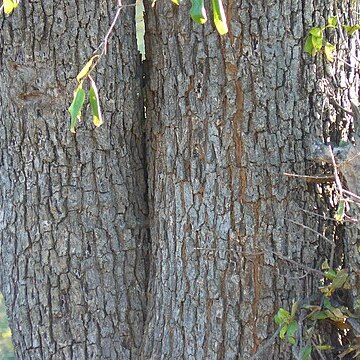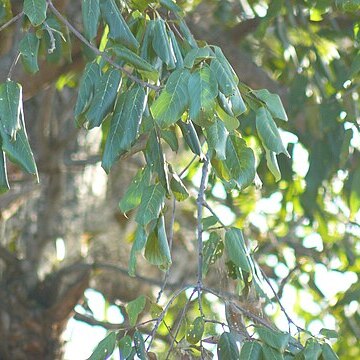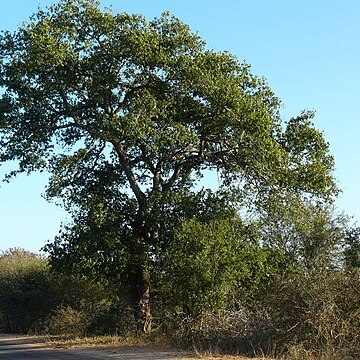A tree. It grows 12-18 m tall. It usually loses its leaves during the year. The branches are spreading. The crown is dense and round. The leaves are simple and nearly opposite. They are dark green above and paler underneath. They are 2.5-10 cm long and 8 cm wide. They are oval with pointed tips. The flowers are in small stalked clusters in the axils of leaves. The fruit are like small pointed plums. They are about 2 cm long. They are yellow or red. They have a sweet yellow pulp and a kernel with 2 seeds. The fruit are edible.
Leaves alternate towards base of shoots, opposite to subopposite distally; lamina 5–11 × 3–6·6 cm., ovate or obovate-elliptic, midrib and 5–8 pairs of secondary nerves extending to leaf margin very prominent beneath and tertiary venation prominent and subparallel in adult leaves, glabrous or sparingly pubescent especially along the nerves above and below; petiole 5–15 mm. long, glabrous or pubescent.
Tree up to 20 m. or more tall with dense rounded crown; bark very rough and tending to exfoliate in large pieces; branchlets pubescent or glabrous.
Ovary 2-locular, 1 seed per loculus; styles either 0·5 mm. long and notched at the top or 1·5 mm. long and markedly 2-fid.
Flowers subfasciculate in axillary 1–10-flowered cymes.
Drupe yellow, up to 2 × 0·8 cm., ellipsoid, edible.
Sepals deltate, 2 mm. long, glabrous.
Flower-bud 3 mm. in diam., glabrous.
Seeds c. 10 × 4 mm., compressed.
Disk enveloping the ovary.
Pedicels up to 9 mm. long.
Stamens 1·5–2 mm. long.
Petals 1·5–2 mm. long.




